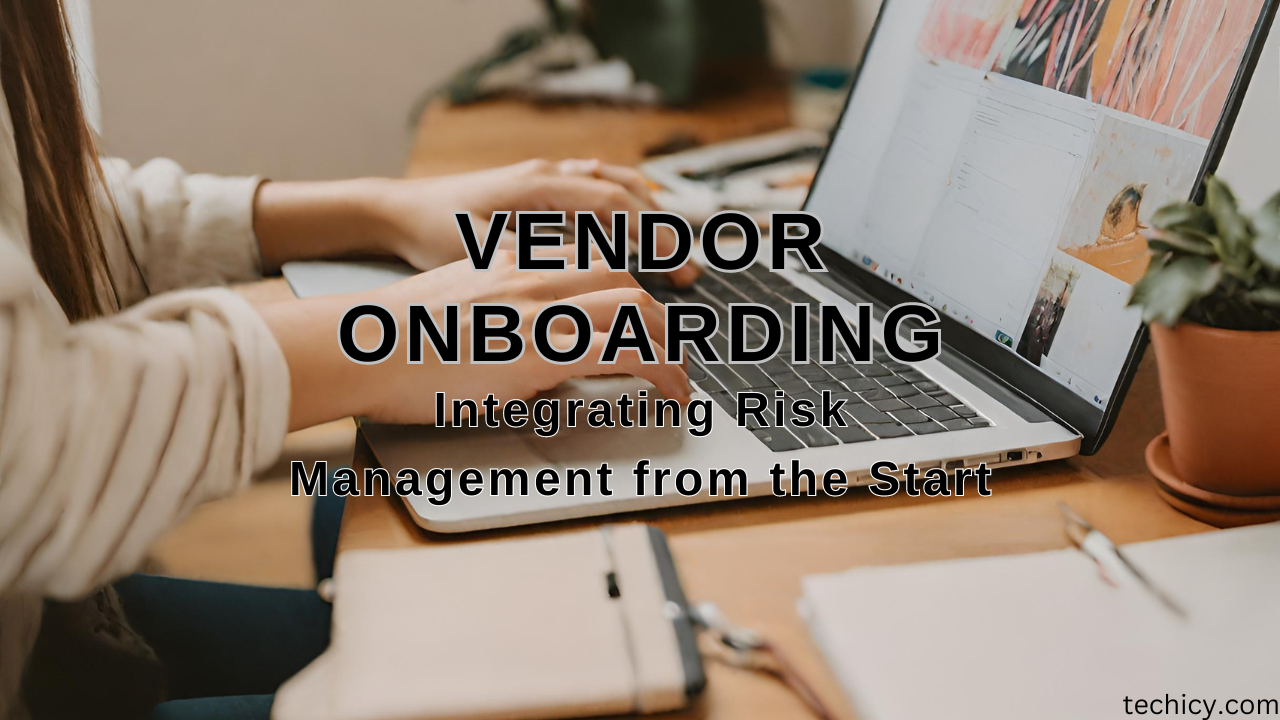In today’s globalized and interconnected business landscape, organizations are increasingly reliant on third-party vendors to deliver products, services, and critical components of their operations. While vendor partnerships can offer numerous advantages such as cost savings, expertise, and scalability, they also introduce inherent risks. To mitigate these risks effectively, it is essential to implement a robust vendor onboarding process that integrates risk management from the very beginning.
This article explores the importance of vendor onboarding and outlines key strategies to ensure that risk management is a central component of the onboarding process.
Understanding Vendor Onboarding
Vendor onboarding refers to the process of integrating a new supplier or vendor into an organization’s procurement system, supply chain, and operations. This process includes various steps such as due diligence, contract negotiation, performance assessment, and compliance verification. While these steps are essential for ensuring smooth vendor relationships, they also offer an ideal opportunity to assess and manage risks associated with vendor partnerships.
The risks associated with vendors can encompass a wide range of issues, including:
- Financial Risk: Vendors may face financial instability or bankruptcy, which can disrupt the supply chain.
- Operational Risk: Poorly managed vendors can lead to production delays, quality issues, or inefficiencies.
- Compliance Risk: Vendors must adhere to legal and regulatory requirements, and non-compliance can expose the organization to legal and reputational risks.
- Cybersecurity Risk: Vendors often have access to an organization’s systems and data, making them a potential entry point for cyberattacks.
- Reputational Risk: The actions of vendors can impact an organization’s reputation, particularly if they are involved in unethical or illegal activities.
Given the potential impact of these risks, organizations must ensure that vendor onboarding is not just a bureaucratic process but a strategic initiative that incorporates risk management measures.
The Importance of Integrating Risk Management
Integrating risk management into the vendor onboarding process offers several significant advantages:
1. Proactive Risk Identification
By assessing risks during the vendor onboarding process, organizations can identify potential issues before they become major problems. This allows for early intervention and risk mitigation strategies.
2. Cost Reduction
Proactively managing risks can help organizations avoid costly disruptions, legal issues, or reputational damage. By addressing risks upfront, organizations can reduce the financial impact of vendor-related problems.
3. Enhanced Vendor Relationships
Effective risk management during onboarding demonstrates to vendors that the organization is committed to a mutually beneficial and long-term partnership. This can lead to stronger, more collaborative relationships.
4. Regulatory Compliance
Many industries are subject to stringent regulations regarding vendor relationships. Integrating risk management into vendor onboarding helps ensure compliance with these regulations, reducing the likelihood of legal repercussions.
Key Strategies for Integrating Risk Management into Vendor Onboarding
To achieve effective risk management in vendor onboarding, organizations should follow a structured approach. Here are key strategies to consider:
1. Vendor Risk Assessment
Before onboarding a vendor, conduct a comprehensive risk assessment. This assessment should consider the vendor’s financial stability, operational capabilities, compliance with legal and regulatory requirements, and cybersecurity measures. Develop a risk-scoring system that quantifies these factors to facilitate objective decision-making.
2. Due Diligence
Thorough due diligence is essential to verify the accuracy of the information provided by the vendor. This includes financial statements, references, background checks, and site visits if necessary. Ensure that the vendor’s values align with your organization’s ethical standards and code of conduct.
3. Contractual Protections
Craft robust contracts that clearly define expectations, responsibilities, and consequences for non-compliance or breaches. Include clauses that allow for regular performance reviews, quality assessments, and exit strategies in case the vendor relationship deteriorates.
4. Performance Metrics
Establish key performance indicators (KPIs) and metrics to track the vendor’s performance throughout the partnership. Regularly review these metrics to ensure that the vendor is meeting agreed-upon standards and goals.
5. Training and Education
Provide training and education to both internal teams and vendors regarding the organization’s policies, procedures, and compliance requirements. This helps ensure that all parties involved are on the same page and can proactively address issues.
6. Continuous Monitoring
Vendor risk management doesn’t end with onboarding. Implement ongoing monitoring processes to assess the vendor’s performance, financial health, and compliance with contractual obligations. This continuous assessment allows for early detection of potential problems.
7. Technology Solutions
Leverage technology, such as vendor management software and data analytics, to streamline the vendor onboarding process and monitor vendor performance. These tools can provide real-time insights into vendor-related risks.
8. Contingency Planning
Develop contingency plans that outline steps to be taken in the event of vendor-related disruptions. Having a predefined plan can minimize the impact of unexpected issues.
9. Communication and Collaboration
Establish clear lines of communication with vendors to facilitate open dialogue and quick issue resolution. Collaborate with vendors to jointly address risks and find solutions.
Case Study: The Benefits of Integrating Risk Management
To illustrate the benefits of integrating risk management into vendor onboarding, consider the following case study:
Company X, a multinational manufacturing company, decided to revamp its vendor onboarding process to incorporate robust risk management practices. They implemented a comprehensive risk assessment framework that evaluated vendors’ financial stability, operational processes, compliance with environmental regulations, and cybersecurity measures.
As a result of this initiative, Company X achieved the following:
- Risk Mitigation: By identifying financially unstable vendors early in the onboarding process, Company X avoided disruptions caused by vendor bankruptcy.
- Cost Savings: The company reduced the costs associated with production delays and quality issues by proactively addressing operational risks during onboarding.
- Improved Compliance: Vendor compliance with environmental regulations improved significantly, reducing the risk of legal action and negative publicity.
- Enhanced Relationships: Vendors appreciated the collaborative approach to risk management, leading to stronger, more productive relationships.
- Regulatory Compliance: Company X ensured compliance with evolving environmental regulations, protecting its reputation and avoiding penalties.
Conclusion
Vendor onboarding is a critical process for organizations that rely on external suppliers and partners. To safeguard against the various risks associated with vendor relationships, it is imperative to integrate risk management from the very start. By conducting thorough vendor risk assessments, implementing due diligence practices, crafting robust contracts, and continuously monitoring vendor performance, organizations can proactively address risks and ensure the success of their vendor partnerships. In an increasingly interconnected and competitive business environment, effective vendor risk management is not just a best practice; it is a strategic imperative.
About Author
My name is Manpreet and I am the Content Manager at Scrut Automation, one of the leading risk observability and compliance automation SaaS platforms. I make a living creating content regarding cybersecurity and information security.
Manpreet can be reached online at manpreet@scrut.io and at our company website https://www.scrut.io/

